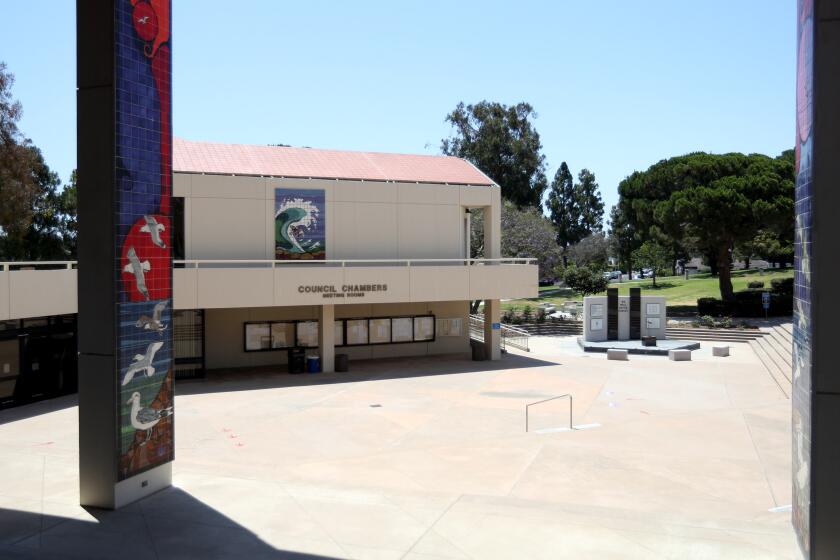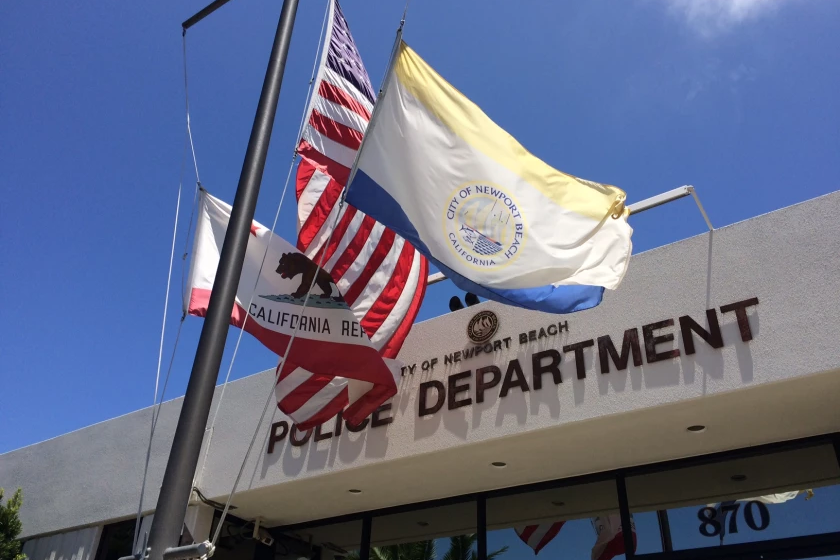Exploring the final frontier of Antarctica
- Share via
Arthur and Rhoda Friedman
My husband and I have traveled practically all over the world.
Therefore, it was going to be extra special to go to our seventh
continent -- Antarctica.
We had wanted to go to this last vestige of unpolluted land for
many years. We left LAX and flew to Santiago, Chile, for two days
before we met up with our tour. Then we flew to Ushuaia, Argentina,
which is the southernmost city in the world. We got onto our ship,
the MS Endeavour, which would be our home for 12 days.
People who know us are aware that we normally do not take cruises
and thought we would be staying at hotels in the Antarctic.
Obviously, they were unclear what the Antarctic is all about. There
are no hotels, and the only way to see this is to go on a ship.
We picked the Endeavour because it is relatively small and carries
108 passengers. It can go into channels where the big cruise ships
cannot go. It was rated for ice breaking, but was not an ice cutter
-- the difference being that true ice cutters are very round on the
bottom, which makes for a much rougher journey, and that is the last
thing you want crossing the infamous Drake Passage. This is the area
where the Atlantic and Pacific oceans meet, and it can be a most
unpleasant experience for two days.
Luck was with us, and we had a relatively smooth crossing in both
directions. Nonetheless, most of us had our seasick patches and
pressure bands on and were taking ginger tablets just to be safe.
That turned out to be very smart. On my birthday, which came while we
were still in the Drake Passage, I was presented with a birthday
cake, and it almost landed in my lap. Everyone was holding on to
their wine bottles as the ship rocked from side to side. People were
leaving the dining room in droves, and the ropes were up all over to
hold on to so you could walk around. Amazingly, I was fine, as I have
been known to turn green from turning around in a swivel chair three
times.
Our first morning after the crossing, we were awakened at 7:30
a.m. and urged to come on deck to see a large group of about 50 fin
whales, accompanied by Antarctic fur seals and wandering albatrosses
and penguins. We saw our first iceberg that morning. After lunch, we
saw a group of humpback whales that gave us a display of breeching
and flipper-flapping.
But the highlight of the day was our first landing on Aitcho
Island. There, we were greeted by chinstrap and gentoo penguins. This
is a breeding colony, and they were everywhere. It has to be seen to
be believed. All during the week, we were never tired of seeing the
penguins and their chicks nestled underneath them.
We had the opportunity on two occasions to kayak among the
icebergs. This was the most amazing experience. The water is so
still, and the icebergs reflect the color of the water, making deep
turquoise slashes in the icebergs. You feel totally at one with
nature. The colors are all shades of white and grey and no green.
Just this deep blue and turquoise against the stark white of the ice.
As we were returning to the ship in our zodiac, there was a Minke
whale that came right up to the zodiac and began playing in the
water. These were experiences, the likes of which we have never had
and most likely never will again. All in all, we kept saying to one
another that there are no words to describe this trip. You have to be
there to know what we are saying.
The only signs of human habitation are the deserted research
stations. Some are being kept as historic sites, and others are being
dismantled. What goes into the Antarctic comes out. There are no
dumpsites, no litter from tourists and no noise -- just the sounds of
nature and the calmness that overcomes you when you look at this vast
area of white. It makes one wonder how the first explorers had the
strength to make this journey and go all the way to the South Pole.
We were 1,500 miles from the South Pole, and we thought we were at
the end of the world.
The highlight of this expedition was the night we went ashore at
11 p.m. (still light out and perfect for picture-taking) and walked
onto a thin skin of frozen sea. We were walking on a thin pane of
ocean with 1,600 feet of black water below us. At midnight in this
frozen wilderness, on another ice edge right next to the bow of the
ship, were a couple of emperor penguins. They are the largest
penguins and not known to normally be in this part of the Antarctic.
They snuggled and preened like two teenagers. According to our
naturalist, they were courting. There was not a lens in anyone’s
camera wide enough to capture the scene of these two, all alone with
nothing but white as far as the eye could see. They were oblivious to
the crabeater seals along the ice edge bursting out of the water to
do wheelies on the snow.
We mailed postcards at the only post office in the Antarctic,
which is at Port Lockroy. We don’t know how the people there manage
in such isolation. The next to last day, we landed at Deception
Island, where a thermal area of water tempted a few brave souls to
get into bathing suits for a dip. It was actually a small puddle made
by digging in the sand and could hold maybe five people. Our attitude
was that we don’t get into bathing suits if possible at home, so why
do it here? Arthur did roll up his pants and sat on the edge to get
his feet in.
The trip was all we had hoped for and more. It showed us what
brave men the first explorers were and the awful hardships they
endured. It made us aware of how a species can become extinct through
ignorance and greed, which was what happened with the whales. They
have made a recovery, thanks to the restrictions on whaling in that
area. It reinforced our belief that it is up to every one of us to be
responsible for the environment. A trip to an unspoiled area like
this just makes you want to do your part.
* ARTHUR AND RHODA FRIEDMAN are residents of Newport Beach.
All the latest on Orange County from Orange County.
Get our free TimesOC newsletter.
You may occasionally receive promotional content from the Daily Pilot.






